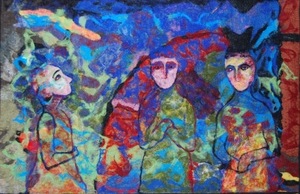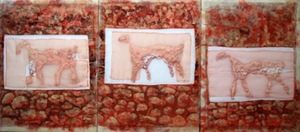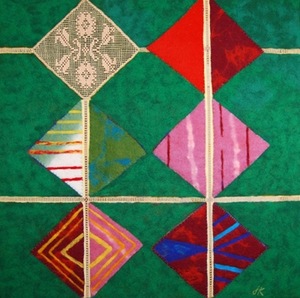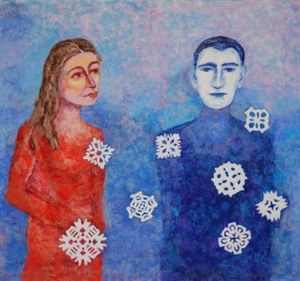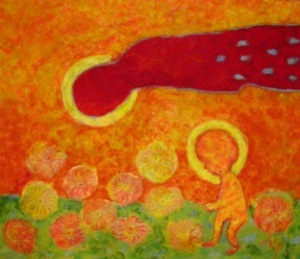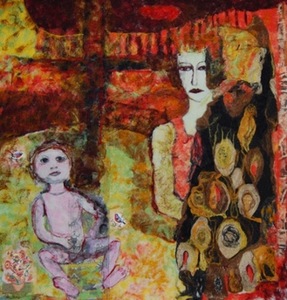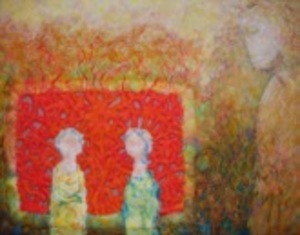Textile as painting 1
In brief: The newest exhibition of Laimutė Kozlovienė (b. 1958) was displayed at Raudondvaris Manor in September of 2014. Before analysing the form of works, technique, internal philosophy and possibilities to picture the seen reality, it is worthwhile to get acquainted with the artist’s biography briefly.
Vilnius artist L. Kozlovienė studied painting and graphic art at Moscow Evening Art University in 1987 – 1989 and textile at Vilnius Academy of Arts in 1996 – 2000. She has been participating in exhibitions actively since 1984. In 1999 the author was one of the first artists in Lithuania who displayed her paintings in untraditional spaces – in showcases of shops. L. Kozlovienė has organised seventeen solo exhibitions in various towns of Lithuania, participated in more than sixty group exhibitions in Lithuania and abroad. From 2001 the artist is a member of the Lithuanian Artists’ Association. She has received various awards for her creative work. The biggest number of works of L. Kozlovienė are stored in Lithuanian and Polish museums, in private art collections.
Works of L. Kozlovienė (e.g. ”Silence of the Lambs”, triptych 3x (60 x 80 cm), mixed technique, 2001) encourage the author of the text to search for the answer to questions about the originality of textile art. Also, when thinking about textile art, the author remembers that textile is the closest to the body. However, the evolution of this field of art and works of L. Kozlovienė show that textile has always tried to get rid of its function of applied art. No matter whether works are performed by weaving or felting, they are always formed on the basis of strategies which predominate while creating a painting.
The artist usually pictures the man in the centre of her works. Compositions are formed following the composition forms that prevail in pictures (in paintings, graphic art, drawing in general). Central composition predominates frequently. The mood of nostalgia, longing and waiting is formed in the artist’s works.
According to L.Kozlovienė, ”the works of the latter years were creating by felting wool with a needle, by making layers of different most subtle shades which create a painterly illusionary surface, which enables to tell the material only by touching it by hand or from very close. The works remind of painting and replace it for me.”
In summary, it may be stated that textile works created by L. Kozlovienė do not aim to be pure. On the contrary, textile replaces painting to the artist. By picturing the human image and composing needlepoint or its fragment, the author forms the dialogue with the viewer. Human existence, time, experience, memory, belief and other actual issues of life are in the centre of this dialogue.
*Quoted thoughts of L.Kozlovienė are from the letter of the artist to R.Venckus.
